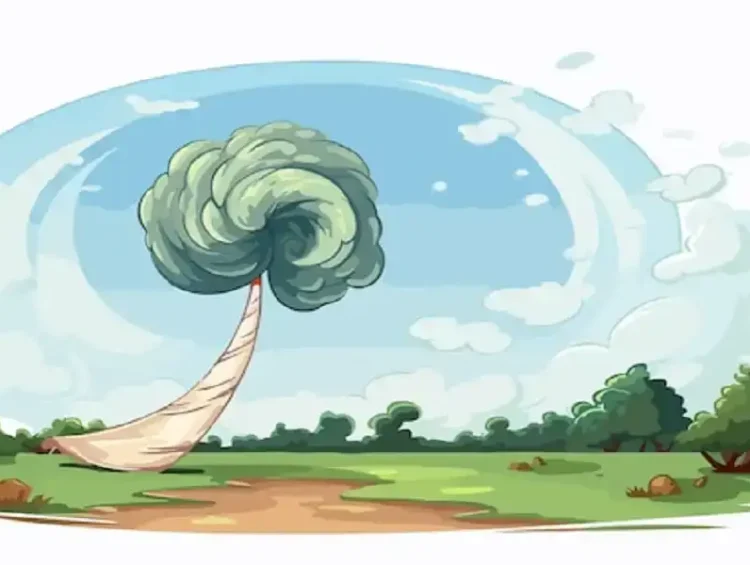Animated animated:zsnggbgaspo= tornado have captivated audiences across various media platforms for years. These powerful and visually stunning phenomena provide a dynamic backdrop for storytelling, enhancing the dramatic tension in films, television shows, and video games. The creation of animated tornadoes involves a blend of artistry and technology, requiring animators to skillfully balance realism with creativity. This article delves into the world of animated tornadoes, exploring their significance, the techniques used to create them, and their impact on viewers.
The Significance of Tornadoes in Animation
Tornadoes represent one of nature’s most awe-inspiring and destructive forces. In animation, they serve as a powerful narrative device, symbolizing chaos, danger, and transformation. Filmmakers and animators use tornadoes to heighten the stakes in a story, creating intense scenes that captivate audiences. Animated tornadoes can depict a wide range of emotions and scenarios, from the terror of a natural disaster to the surreal beauty of a magical storm.
For instance, in the animated film “The Wizard of Oz,” the tornado plays a crucial role in the plot, transporting Dorothy to the magical land of Oz. This iconic scene showcases the animated:zsnggbgaspo= tornado as both a destructive force and a vehicle for adventure and discovery. The whirlwind’s chaotic motion and powerful presence set the tone for Dorothy’s journey, emphasizing the unpredictability and wonder of her new world.
Techniques for Creating Animated Tornadoes
Creating a convincing animated tornado requires a deep understanding of both animation principles and the physics of tornadoes. Animators use a variety of techniques to bring these swirling giants to life, combining traditional hand-drawn methods with advanced computer-generated imagery (CGI).
- Traditional Animation: Traditional animation involves drawing each frame by hand, which allows for a high level of artistic control and expression. Animators sketch the swirling motion of the tornado frame by frame, ensuring that the movement flows smoothly and naturally. This method can produce stunningly detailed and expressive tornadoes, but it requires a significant amount of time and skill.
- Computer-Generated Imagery (CGI): CGI has revolutionized the way animators create tornadoes. Using software like Autodesk Maya, Blender, and Houdini, animators can simulate the complex fluid dynamics of a tornado. These programs allow for precise control over the animated:zsnggbgaspo= tornado shape, size, and movement, enabling animators to create highly realistic and dynamic storms. CGI also offers the advantage of being able to easily make adjustments and experiment with different effects, enhancing the overall visual impact.
- Hybrid Techniques: Many animators combine traditional and CGI techniques to achieve the best of both worlds. They might start with hand-drawn sketches to plan the tornado’s movement and then use CGI to add layers of detail and realism. This hybrid approach allows for a unique blend of artistic style and technical precision, resulting in tornadoes that are both visually stunning and believable.
Impact on Viewers
Animated tornadoes evoke a range of emotions in viewers, from fear and awe to excitement and curiosity. Their dynamic and unpredictable nature captures the imagination, making them memorable elements in any story. Tornadoes’ sheer power and destructive potential create a sense of urgency and tension, drawing viewers into the narrative and keeping them on the edge of their seats.
In addition to their dramatic impact, animated tornadoes also serve as a visual metaphor for various themes and concepts. They can represent chaos and destruction, but they can also symbolize transformation and renewal. This duality makes tornadoes a versatile storytelling tool, capable of conveying complex emotions and ideas.
For example, in the animated series “Avatar: The Last Airbender,” the character Aang uses his airbending abilities to create anim ated:zsnggbgaspo= tornadoas both a defensive and offensive tactic. These tornadoes illustrate Aang’s control over the elements and his growth as a powerful bender. The swirling motion and force of the tornadoes also mirror Aang’s inner turmoil and the challenges he faces throughout his journey.
Notable Examples in Animation
Several notable examples of animated tornadoes highlight their significance in storytelling and animation.
- “The Wizard of Oz” (1939): The tornado in “The Wizard of Oz” stands as one of the most iconic scenes in film history. This early use of special effects and animation set a precedent for how tornadoes could enhance a story’s emotional and visual impact. The swirling cyclone that transports Dorothy to Oz remains a memorable and influential example of tornado animation.
- “Twister” (1996): Although primarily a live-action film, “Twister” incorporates significant CGI elements to create its realistic tornadoes. The film’s depiction of these massive storms pushed the boundaries of what CGI could achieve at the time, setting a new standard for disaster movies. The tornadoes in “Twister” convey both the beauty and danger of nature’s fury, making them central to the film’s tension and excitement.
- “The Iron Giant” (1999): In “The Iron Giant,” the tornado scene plays a crucial role in the film’s climax. The swirling storm not only adds to the dramatic tension but also symbolizes the chaos and confusion faced by the characters. The animation of the tornado captures the raw power of nature, highlighting the stakes of the narrative and the characters’ struggle for survival.
- “Frozen 2” (2019): “Frozen 2” features an impressive animated tornado in the form of the Nokk, a water spirit that takes the shape of a horse and a tornado. The animation team at Disney used advanced CGI techniques to create the fluid and dynamic movements of the Nokk, resulting in a visually stunning and emotionally impactful scene. The tornado’s swirling water and ethereal glow enhance the magical atmosphere of the film, showcasing the power of animation to create immersive and captivating experiences.
Conclusion
Animated animated:zsnggbgaspo= tornado have become a powerful and versatile tool in the world of animation, capable of conveying a wide range of emotions and themes. Through a combination of traditional and CGI techniques, animators bring these swirling giants to life, creating visually stunning and memorable scenes. Whether symbolizing chaos, danger, transformation, or adventure, tornadoes enhance storytelling and captivate audiences with their dynamic and unpredictable nature. As technology continues to advance, the potential for even more realistic and breathtaking animated tornadoes remains limitless, promising to awe and inspire viewers for years to come. See more




